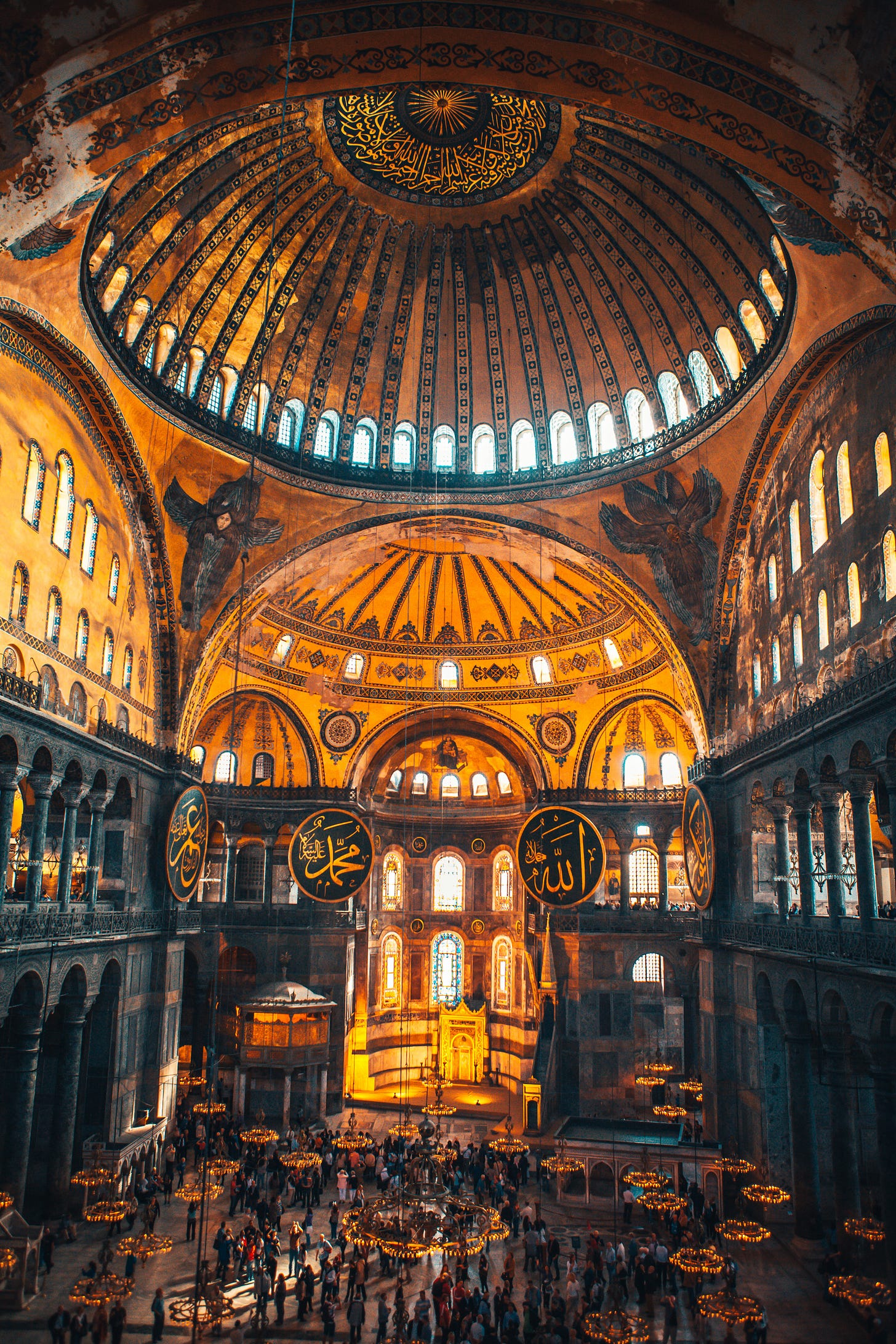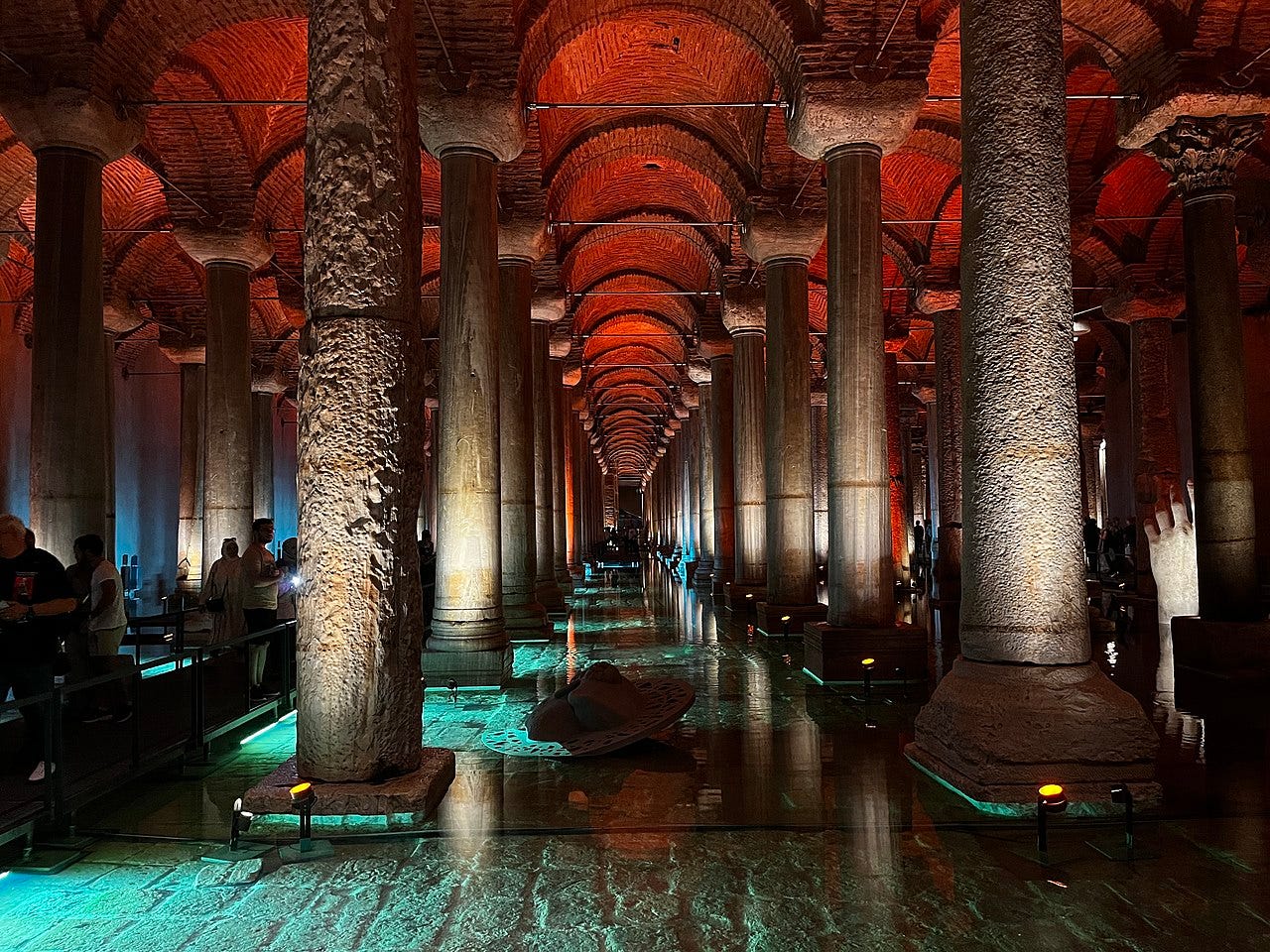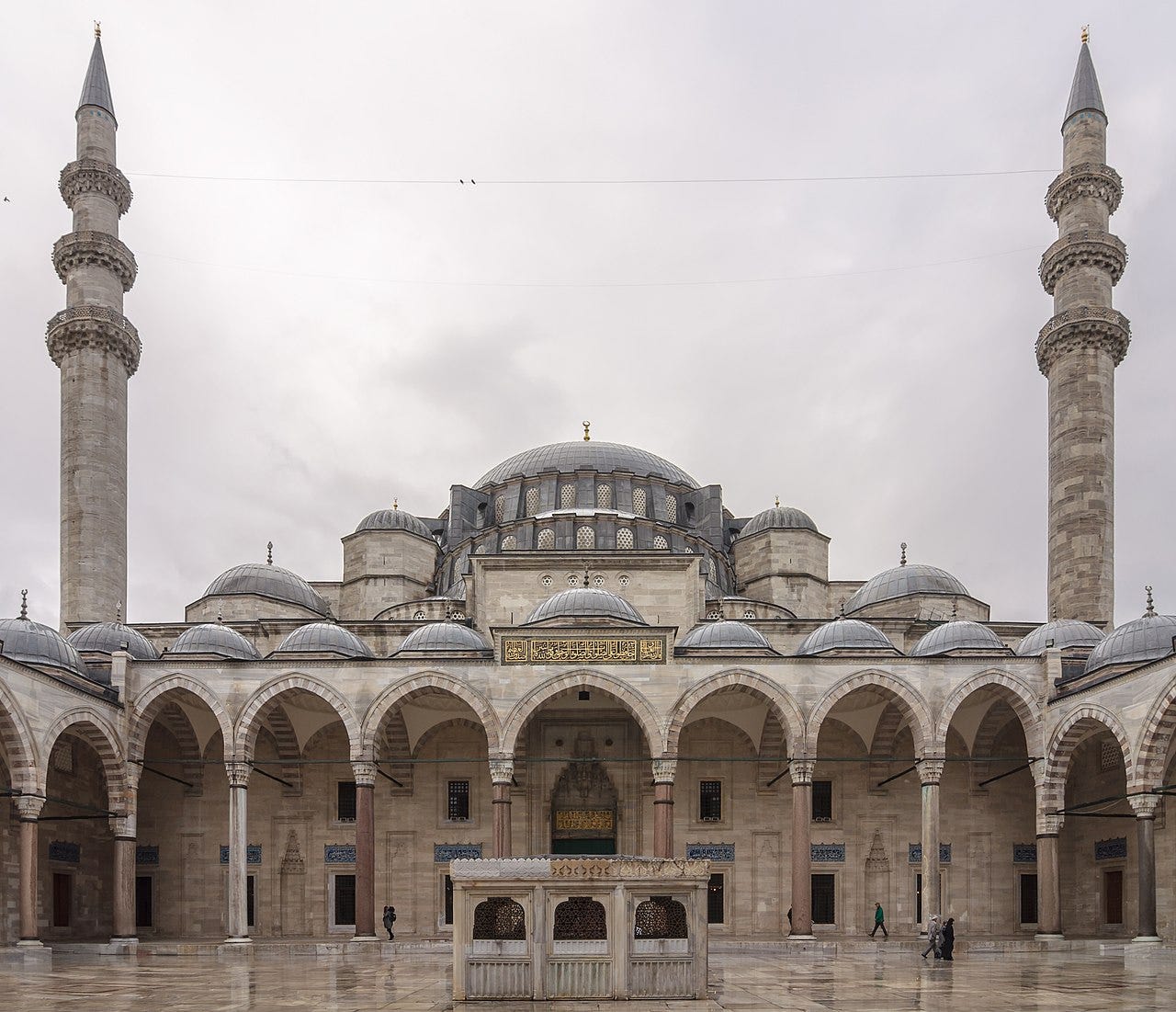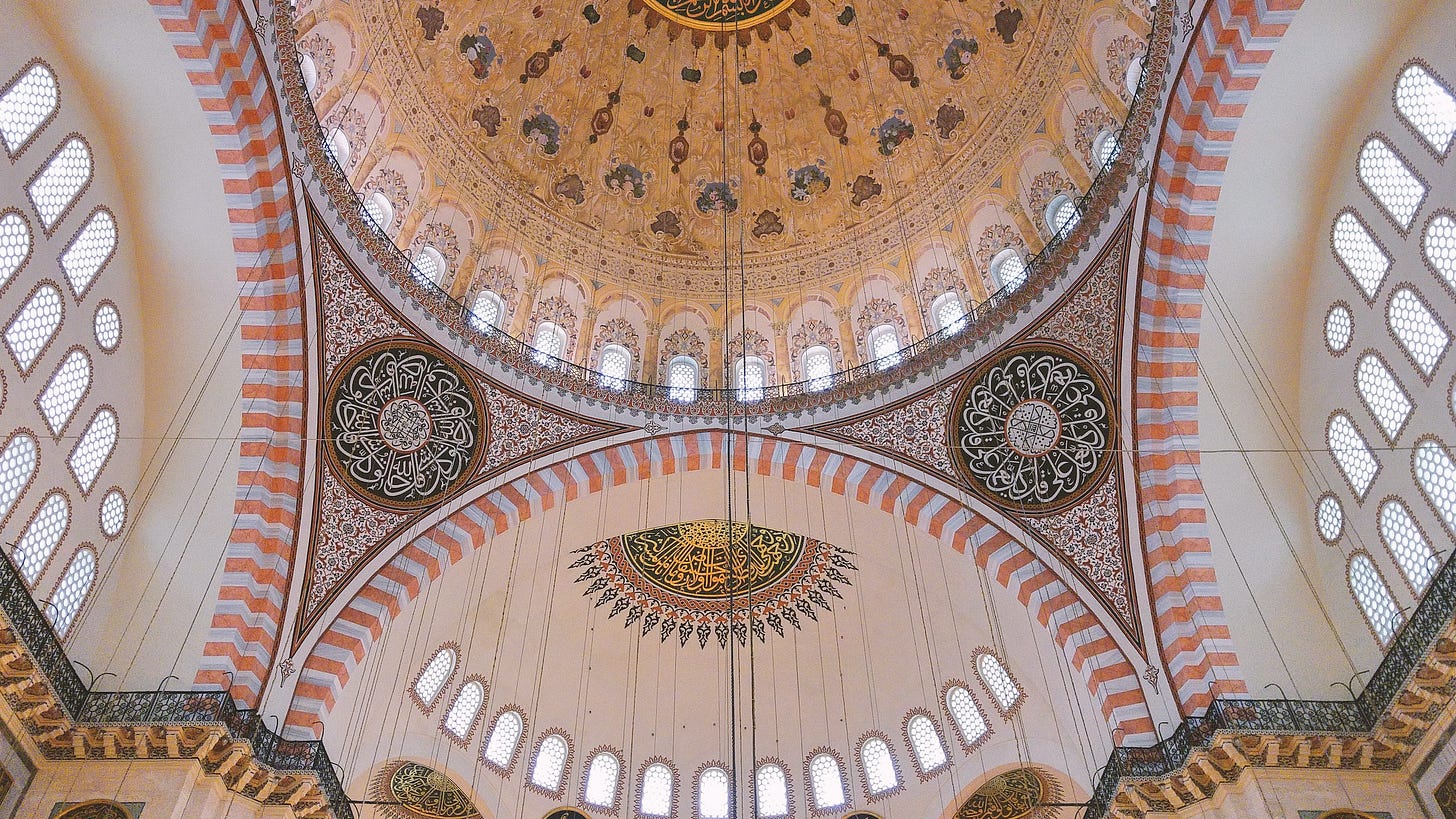İstanbul—Historical Architecture Destination
Welcome to Issue X of Historical Architecture Destinations! Today we're diving into the story of İstanbul as told through three of its historical buildings.
Origins: Byzantium
In 660 BC the city was founded by the Greeks and they named it Byzantium, likely after their leader Byzas.
Nearly a thousand years later the city fell to the Romans and Emperor Constantine I refounded the city in 330 AD. He made Byzantium his imperial capital and called it ‘Nova Roma’ or New Rome. The name New Rome didn’t stick and many people referred to it as Constantinople after Constantine himself.
But Greek speakers used a nickname instead referring to the city as eis tēn polin meaning ‘into the City’.
This title became its nickname eventually turning into Istinpolin. Over the centuries it evolved into İstanbul and became permanent in 1930 when the government formally adopted it to replace the name from Constantinople.
After Constantine I refounded the city he wanted to christianize it and began numerous building projects.
Including expanding the Hippodrome (started by previous Emperor Septimius Severus) a circus that was the social hub of the city that held tens of thousands of spectators. It’s now known as the Hippodrome of Constantine.
He also commissioned the first church over the site of an earlier pagan church called Magna Ecclesia (Great Church). This ‘Great Church’ was the first church on the site of the now Hagia Sophia.
Which brings us to our first building.
1. Hagia Sophia
The son of Constantine I, Constantine II consecrated this first church in 360 AD.
In 395 AD the Roman Empire was split and Constantinople became the capital of the Eastern Roman (Byzantine) Empire.
Right after becoming the capital this first church was destroyed in a fire in 404 AD and a new church was enlarged by Constans I and rededicated in 415 AD by Theodosius II. This second church survived until the violent uprising known as the Nika Riots.
The Nika Riots
In 532 AD during the reign of Emperor Justinian I tensions were high. Two parties (the Blues and the Greens) were the two major factions of the chariot races.
There was to be a chariot race held in the Hippodrome of Constantine. During the race the two teams joined forces in opposition to Justinian I and a riot erupted. They demanded the release of prisoners and even selected a new Emperor. Fires were started and for the next five days the city was under siege.
The rioters burned down the senate attacked the Magna Ecclesia (Great Church) and nearly half of the city was destroyed.
“The whole church at the time lay a charred mass of ruins.”
—Procopius (Byzantine historian of the time)
Emperor Justinian I held more chariot races to try to control the situation.
Eventually he suppressed the riots, but not without a deadly toll. One account states that Justinian’s forces locked the remaining rioters in the Hippodrome of Constantine. And not one inside the Hippodrome survived. The entire death toll of the five days resulted in more than 30,000 deaths.
The Hagia Sophia
After the riots Justinian I began building the new Hagia Sophia and it was remarkably built in only six years.
Byzantine architecture christianized traditional Roman forms and combined Eastern influences. Today it’s considered a masterpiece of Byzantine architecture.
The Hagia Sophia is most known for its massive 105ft (32m) in diameter central dome that gives it a sense of weightlessness. The original columns survive today but many of the decorations have succumbed to the trials and tribulations of the centuries. For example during the Fourth Crusade in 1204 the Hagia Sophia was looted.
Mosaics survive from the 8th and 9th centuries as one of the best sources of knowledge from this time period.

Remaining a church for nearly a millennia it wasn’t until after the Ottoman conquest in 1453 that Hagia Sophia was converted into a mosque. This is when the exterior minarets were added and the western minarets completed by renowned Ottoman architect Sinan.
In 1934 Hagia Sophia was secularized and later turned into a museum. And in 2020 it was converted back into a mosque. It is still an incredibly popular tourist destination and open to visitors.
And sitting just 490ft (150m) southwest of Hagia Sophia is our next building.
2. Basilica Cistern
To enter the cistern one must descend 52 steps underground surrounded by a 13ft (4m) thick firebrick wall.
The cistern was originally a basilica (its namesake) atop a hill facing the Hagia Sophia and also succumbed to damage from the Nika riots. In the 6th century Justinian I enlarged the structure that Constantine I had originally built. The Basilica Cistern is around 105,000sf (9,800sm) in area and is adorned by marble ionic and corinthian columns that hold up the ceiling.
These columns using the classical style were most likely recycled from nearby Roman ruins and two column bases have the face of Medusa on them.
Historical writings claim that the cistern was built by 7,000 slave laborers. The cistern was originally used to provide water for the Great Palace of Constantinople. And continued to provide water one thousand years later to the Topkapı Palace under Ottoman rule.
And it’s under this Ottoman rule that brings us to our third building.
3. Suleymaniye Mosque
Constantinople fell to Ottoman rule in 1453 and officially became its capital in 1517. Suleiman I (The Magnificent) commissioned this mosque to sit atop one of the city’s seven hills in 1550.
Designed by the most renowned Ottoman architect Mimar Sinan it was built atop the site of an old palace and retains much of its original glory. Sinan was inspired by the Hagia Sophia and the Bayezid II Mosque and this Suleymaniye Mosque remains one of İstanbul’s most beautiful Ottoman mosques.
The mosque was built in honor of Suleiman himself who was a patron of the arts including poetry and architecture.
With a massive dome it is nearly as large as the Hagia Sophia and the interior is open and airy. The exterior minarets make up a total of 10 galleries highlighting Suleiman I as the 10th Ottoman sultan. And the interior is decorated with masterful İznik tile around the mihrab (a niche indicating the direction of Mecca).
To the southeast of the main entrance is the mausoleum of Suleiman I and his wife Haseki Hurrem Sultan (Roxelana). The entrance to his tomb is surrounded in ivory panels.
20th century and beyond
The first quarter of the 20th century marked the abolishment of the sultanate and the end of the Ottoman Empire. And after the Turkish War of Independence Ankara was chosen as its new capital. And on October 29, 1923 the Turkish Republic was established.
Today it’s the largest city of Turkey and many of its millennia old landmarks can still be seen.
Including remnants of the Hippodrome of Constantine now known as Sultanahmet Square and its crown jewel, the Hagia Sophia. The historic center is a UNESCO World Heritage site and the city has been named a European Capital of Culture.
Deep dives
This overview barely scratched the surface. To dive into the over two thousand year history of this captivating city check out Istanbul: A Tale of Three Cities by Bettany Hughes.
Discover parts of the 15th century walled Constantinople in the historical fiction Cloud Cuckoo Land by Pulitzer Prize winner Anthony Doerr.
For stories of how the Byzantine Empire bridged two continents over a thousand years listen to Byzantium - Last of the Romans by the Fall of Civilizations Podcast.
Congratulations, you made it to the end!
Thank you for subscribing and reading. I would love to hear your feedback and I read every email. And if you enjoyed the issue, please share it with your friends and family.
How I can help:
My goal is to help you discover the architectural wonders of the world.
I’ve been cataloging these architectural wonders across the globe and while not a complete set (if there is such a thing) I’d love to give you some ideas for your next trip.
Hit reply and let me know where you’re headed next and I’ll send you some ideas for your next trip.
You can follow me on Twitter and Instagram.










